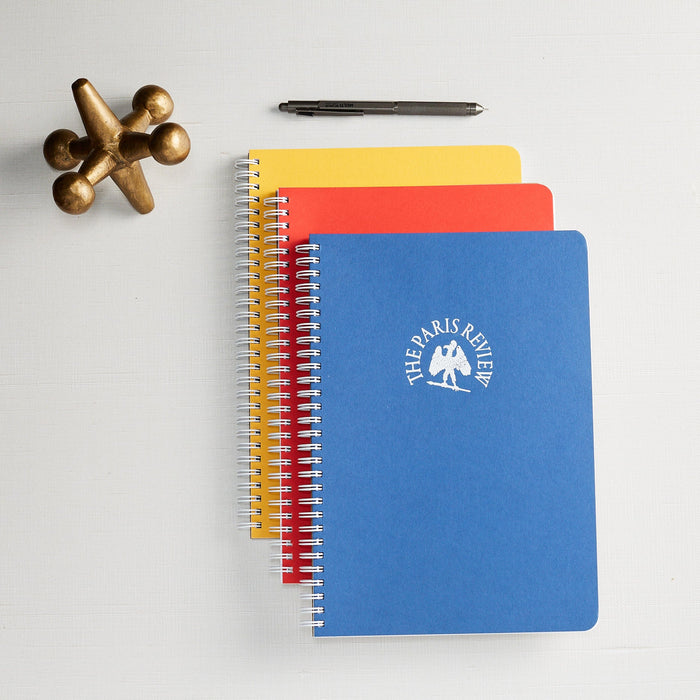Since the dawn of civilization, the artistry and craftsmanship of writing instruments have been instrumental in communicating and preserving knowledge. From the quills painstakingly crafted in medieval scriptoria to the sleek fountain pens treasured by today’s professionals, these tools have evolved significantly over centuries. Each era brings advancements that refine how we write, sketch, and express our thoughts. However, an often overlooked aspect of achieving the perfect script is the choice of paper. Just as a painter selects their canvas, a writer's pen requires the ideal backdrop to truly shine. This becomes even more crucial when using high-quality instruments like fountain pens, which demand paper that complements and enhances their performance. In this blog post, we will delve into the fascinating history of various writing instruments and guide you on how to pair them effectively with the premium notebooks offered by Write Notepads & Co., ensuring every stroke of the pen is as flawless as intended.
A Brief History of Writing Instruments
Fountain Pens
- Origins and Development: The fountain pen's predecessors date back to ancient times, but the modern version that uses an internal reservoir for ink was developed in the early 19th century. Throughout the 19th and 20th centuries, fountain pens underwent various innovations, including the lever-filler system by Waterman and the piston-filler by Pelikan, which significantly improved their functionality and ink capacity.
- Current Status: Today, fountain pens are cherished tools among writing enthusiasts and professionals who value the personal touch they lend to handwritten documents. They are considered symbols of sophistication and are prized for their customizability and the unique writing experience they offer, connecting the writer more intimately with their words.
Ballpoint Pens
- Invention: The ballpoint pen was invented in the 1930s by László Bíró, a Hungarian journalist who wanted a writing instrument that used quick-drying ink to reduce smudging. His invention revolutionized writing, providing a more reliable and maintenance-free alternative to the fountain pen.
- Comparison to Fountain Pens: Ballpoint pens are lauded for their convenience and durability, making them more popular for everyday use. They require less maintenance than fountain pens and are available at a lower cost, which contributed to their widespread adoption across various demographics.
Markers and Fine Liners
- Development: Markers evolved from basic tools used for labeling and industrial purposes to versatile art and writing instruments. The development of felt-tipped pens in the mid-20th century allowed for the creation of markers suited to everything from fine-line drawing to bold, expressive sketches.
- Variety and Uses: Today, markers and fine liners come in an extensive range of colors and tip sizes, catering to a wide spectrum of artistic and writing needs. They are used in professional art environments as well as in schools and offices for their vivid colors and ease of use.
Understanding Paper Quality and Types
Choosing the right paper is not just a matter of preference, but a crucial step towards achieving optimal results with various writing instruments. Paper varies greatly in terms of weight, coating, and texture, each characteristic influencing how the paper interacts with different pens and inks. The weight of the paper often determines its thickness and durability; heavier papers are typically more resistant to bleeding and offer a smoother writing surface, ideal for fountain pens and markers. Coatings on paper can affect ink absorption and drying times, with some finishes designed to enhance the vibrancy of colors or the sharpness of written text. The texture of the paper, whether smooth or rough, can also impact the feel of writing and the level of control one has over the pen. For instance, smoother papers provide a better experience for fountain pens, allowing the ink to flow freely without feathering. In contrast, textured papers might be preferred for drawing or using pencils that benefit from a bit of grip. Understanding these differences in paper quality empowers you to select the right notebook that complements your choice of writing instrument, ensuring both satisfaction and functionality in your writing or artistic endeavors.
Pairing Instruments with Write Notepads & Co. Notebooks
For those who appreciate the elegant glide of a fountain pen, Write Notepads & Co. offers notebooks with exceptionally smooth, high-quality paper. This paper prevents ink bleeding and feathering, ensuring that each stroke remains sharp and clear. Our range of notebooks is perfect for everyday tasks and more formal business settings, catering to the practical needs of dynamic professionals and students alike. For artists or those who use markers and fine liners, our notebooks feature specially designed bleed-proof pages that allow for vibrant color applications and intricate designs. Each notebook in our collection is meticulously crafted to accommodate the specific demands of various writing instruments, ensuring optimal performance whether you're writing, sketching, or planning. With Write Notepads & Co., every detail is considered to enhance your creative and professional endeavors, turning every page into a potential masterpiece.
Practical Tips for Choosing and Using Your Writing Instruments with Notebooks
When selecting writing instruments for use with high-quality notebooks like those from Write Notepads & Co., consider not only how they feel in your hand, but also how they interact with the paper. For optimal performance, regular maintenance of your pens is crucial; this includes cleaning fountain pens to prevent clogging and ensuring that ballpoint pens are capped when not in use to avoid drying out. Match your writing style and purpose with the appropriate notebook. For example, if you tend to write quickly and need to jot down notes throughout the day, a durable notebook with a quick-drying paper suited for ballpoint or gel pens would be ideal. Conversely, if your writing involves detailed journaling or calligraphy, opt for notebooks with a smooth, heavy paper that enhances the flow of a fountain pen and prevents ink bleed. Furthermore, consider the layout of the notebook—ruled lines are great for writing, while dot grids might be better for planning and sketching. By thoughtfully pairing your writing instrument with the right notebook, you can enhance your writing experience's enjoyment and quality.
The synergy between a writing instrument and the paper it graces is not just functional; it is a profound relationship that can elevate the act of writing to an art form. The right pairing ensures clarity and precision in your writing and provides a sensory pleasure that can enhance your creative and intellectual output. At Write Notepads & Co., we understand the importance of this relationship and have meticulously crafted our notebooks to complement a wide range of writing tools. We encourage you to explore various combinations of our high-quality notebooks with your favorite writing instruments. Experimenting with these can unlock new levels of enjoyment and effectiveness in your writing, whether for professional purposes, academic success, or personal exploration.
Join Our Community
Join our passionate community of writers and pen enthusiasts! Share your favorite writing instrument combinations and Write Notepads & Co. paper on social media using #WriteNotepads and tell us about your experience. How has the right notebook changed the way you write? Visit our website to explore our extensive range of notebooks, each designed with specific writing needs. Whether you're looking for a robust notebook that can handle the bold inks of markers or a finely crafted journal that makes your fountain pen dance across the page, Write Notepads & Co. has something special for you. Dive into our collection today and enhance your writing journey with the best tools at your fingertips.




Leave a comment